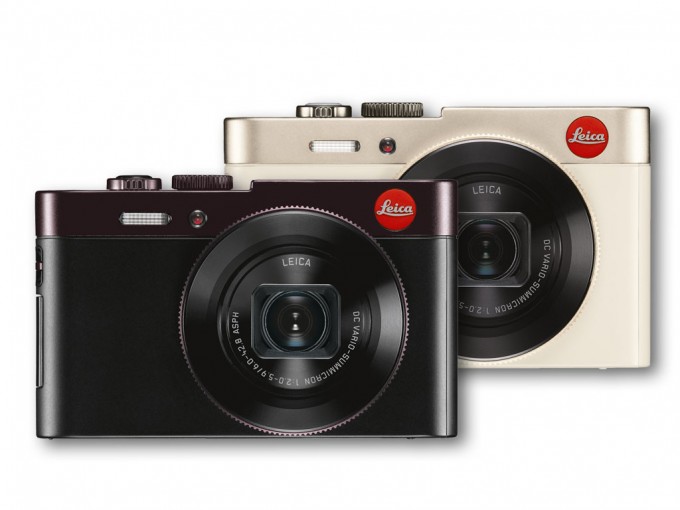Leica’s new small-sensor point-and-shoot, the C (Typ 112), has a number of features that will attract buyers. Using the same 1/1.7in 12.7MP CMOS sensor as the D-Lux 6 (aka Panasonic LX 7), the C is far smaller but compromises with a slower lens. It is a Panasonic LF-1 under the skin but Leica, with the Audi-designed body, has produced a much better looking and ultimtely more satisfying device.
The C has two overriding benefits over the D-Lux as far as I am concerned. First, it is very small, smaller even than the Sony RX100, and is likely to be a pocket fit for most people. Second, it has a small but low-resolution electronic view bult into the tiny body. However primitive, the viewfinder is there and will be welcomed by Leica shooters.
While the sensor size is the same as that in the much bigger D-Lux 6 (which is made even more unwieldy when the hotshoe viewfinder is added) ultimate lens performance has been sacrificed in the interests of reduced size. The D-Lux 6 sports a superb f/1.4-2.3 zoom with a useful range of 24-90mm. This is regarded by many as one of the best lenses on any compact camera; it is certainly one of the fastest if not the fastest.
A slow lens, however, doesn’t necessarily mean it is a bad one. We have seen this with Leica’s X-Vario which was initially condemned because of its f/3.5-f/6.4 zoom but has now redeemed itself in terms of image quality. I cannot say whether the slower zoom of the Leica C will gather similar support, but on paper it looks reasonable with a DC Vario-Summicron f/2-5.9 ASPH optic which zooms from an equivalent 28mm to 200mm. This is a more useful range than that of the D-Lux, in my view, and is supported by standard optical stabilisation.
I am a fan of the D-Lux 6 becaue of that wonderful fast lens. But it loses out on bulk, compounded by the protruding lens and the top-mounted EVF (if fitted). And most users need to add an adapter ring to fit a lens-protecting UV filter. I just got fed up carrying it around and was always reluctant to pack it alongside an M system.
The C, on the other hand, has a fully retracting lens which looks very similar to that on the RX100. It also has an automatic lens cover which means that further protection is not necessary. Add a built-in EVF (which I believe is unique on a camera of this size) and Leica have a potential winner on their hands.
The sister Panasonic LF1 has not been too well received by critics and compared unfavourably with the larger-sensored Sony RX100. Cameralabs.com has published the most compehensive and objective review of the LF1 I have seen. The writer compares the LF1 (aka Leia C) with the LX7 (aka D-Lux 6). The low-resolution EVF has been hammered by most reviewers and, again, compared unfavourably with larger viewfinders (all of which are on larger cameras of course). I think critics are missing the point. The LF1 and Leica C are complete cameras that can easily slip in the front pocket of a pair of jeans. They don’t need appendages and extras to make them useful. They even offer wifi and near-field communication.
I like this camera and I love the Audi-design exterior which comes in two rather nice colour schemes described as light gold (a sort of ivory and black) and dark red (black with bugundy). I think Leica fans will see the C as the ideal go-anywhere pocket camera to complement an M system or, even, an X-Vario. I am looking forward to getting my hands on one for test when they become available in early October.
The Leica C will cost £550, which is about £180 more expensive than the equivalent Panasonic. But, as I wrote last March, this not a big deal when you bear in mind that the Leica includes a copy of Lightroom (worth over £100) and a one-year accidental damage insurance (Leica Passport) in addition to the two-year warranty. Add in the more tasteful design and the much higher resale value and, for once, Leica has produced an attractive product at a reasonable price.

